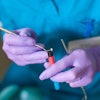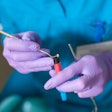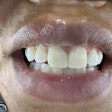Dear Restoratives Insider,
The arrival of the Brånemark implant method in the U.S. in the 1980s resulted in a significant decline in the placement of blade-form implants. Could a reclassification of these implants by the U.S. Food and Drug Administration (FDA) lead to a resurgence in their use? Click here to find out.
In other Restoratives Community news, respected dental writer and motivational speaker Monica Anderson, DDS, took a look at another area of restoratives that has seen change and expansion: the evolution of polishing and finishing systems.
Meanwhile, handpieces have come so far that dentists can now purchase disposable ones. An ADA lab evaluation compared the performance of two models and the results can help determine which is best for particular situations. Read about their strengths and weaknesses here.
Another comparison study could help practitioners' decision-making when it comes to flowable composites. The study found that, compared with conventional sealants, self-adhesive flowable composites were lacking as pit-and-fissure sealants. Read on to learn where they came up short.
And are changes in the use of bisphenol A (BPA) imminent? Three studies presented at the Endocrine Society's annual meeting in San Francisco yielded some unsettling findings.
Finally, in dental anesthesia, doctors are still shaping their approach to the treatment of children. Two studies sought to help them get better postanesthesia results.
The first describes a procedure that can reduce emergence agitation and delirium among children. Find out how it works.
The second sheds light on the behavior of young patients who are recovering from sedation after they have left the practice; the results could be useful in setting parents' expectations, according to the authors.



















